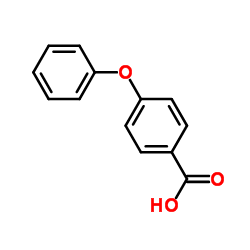Effects of amino acids on the amidation of polyaromatic carboxylic acids by Bacillus cereus.
R Maruyama, A Kawata, S Ono, M Nishizawa, S Ito, M Inoue
Index: Biosci. Biotechnol. Biochem. 65(8) , 1761-5, (2001)
Full Text: HTML
Abstract
The soil bacterium Bacillus cereus Tim-r01 efficiently transformed polyaromatic carboxylic acids (PACA) such as 4-biphenylcarboxylic acid (4-BPCA), 4-biphenylacetic acid, and 4-phenoxybenzoic acid into their corresponding amides. The amidation activity was expressed at 37 degrees C (pH 7-8) in the presence of grown cells in nutrients under an aerobic atmosphere. Other strains of B. cereus, IFO 3001 and IAM 1229, also gave the amide from 4-BPCA. In phosphate-buffered saline (PBS), the addition of normal amino acids was essential, while sulfur-containing amino acids such as methionine and cysteine drastically inhibited the amidation. Tracer experiments using N-15-isoleucine and N-15-alanine showed that the nitrogen atom of the amide came from an amino group of amino acids but not from ammonia or alkylamines.
Related Compounds
| Structure | Name/CAS No. | Molecular Formula | Articles |
|---|---|---|---|
 |
4-Phenoxybenzoic acid
CAS:2215-77-2 |
C13H10O3 |
|
Dioxygenolytic cleavage of aryl ether bonds: 1,2-dihydro-1,2...
1990-06-01 [FEMS Microbiol. Lett. 57(3) , 317-21, (1990)] |
|
Microarray immunoassay for phenoxybenzoic acid using polymer...
2005-11-01 [Anal. Chem. 77(21) , 6864-73, (2005)] |
|
Structure--activity relationships of azasugar-based MMP/ADAM...
2003-08-18 [Bioorg. Med. Chem. Lett. 13(16) , 2737-40, (2003)] |
|
Cloning, nucleotide sequence, and expression of the gene enc...
1995-01-01 [Arch. Microbiol. 163(1) , 35-41, (1995)] |
|
Prooxidant and antioxidant action of 4-(4-phenoxybenzoyl)ben...
2004-04-05 [Biopolymers 73(5) , 631-9, (2004)] |